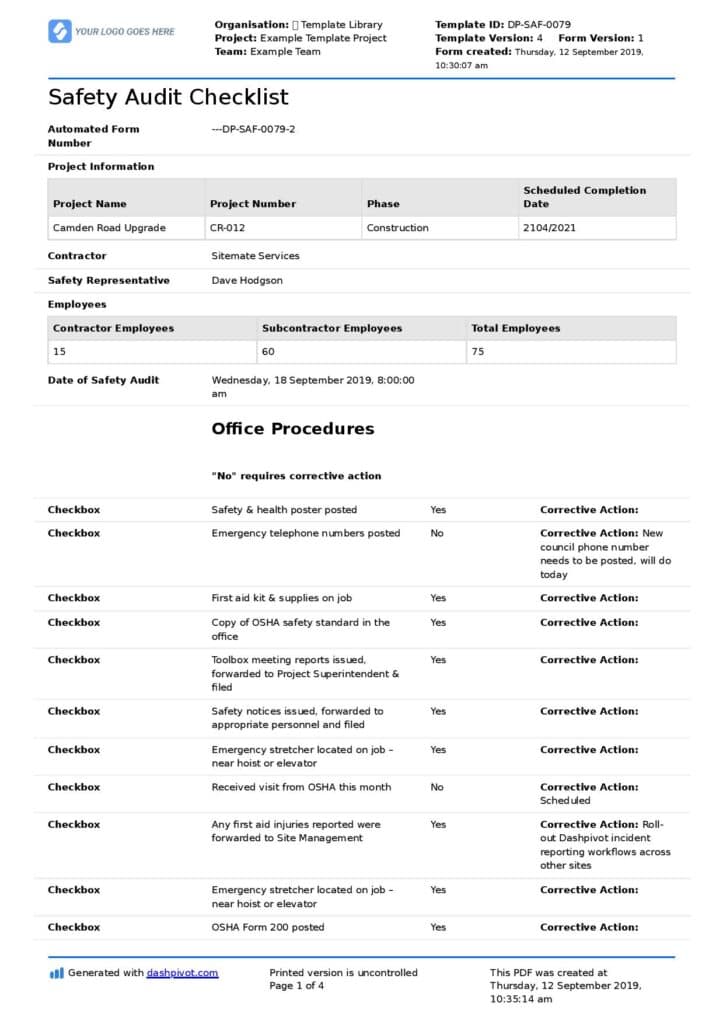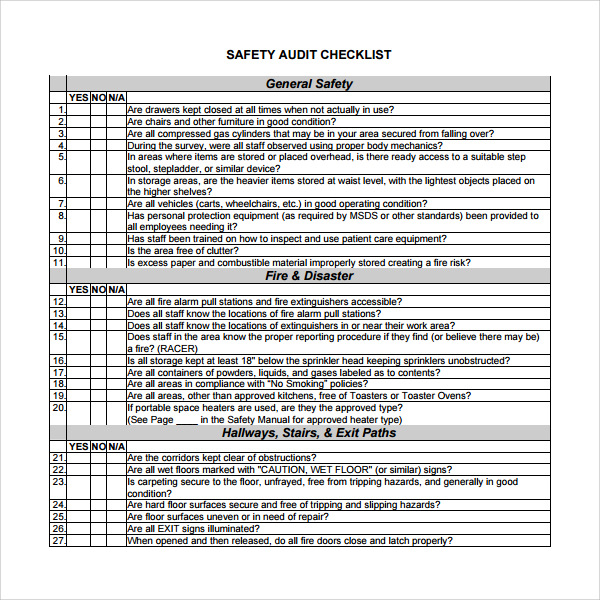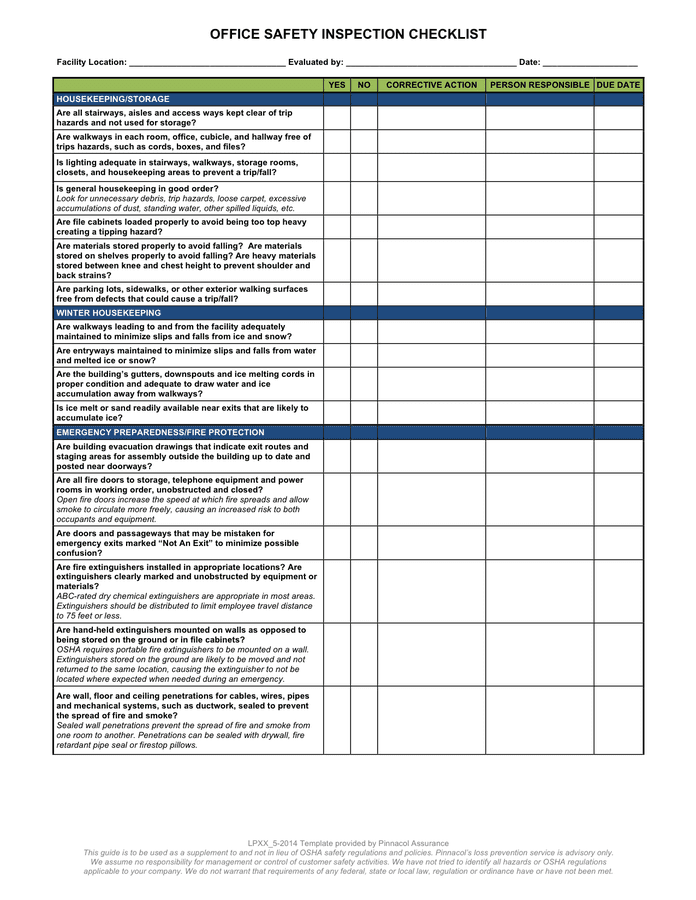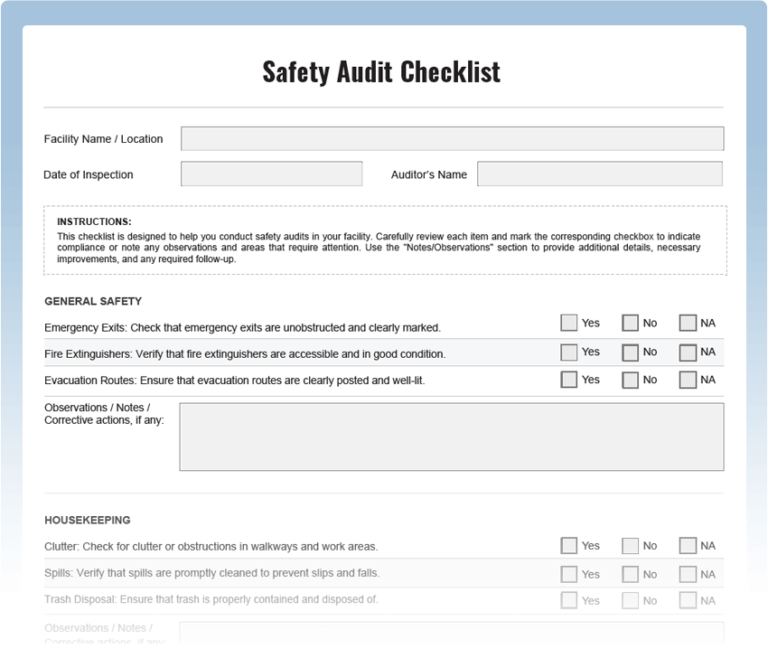Whether you’re securing your home or running a business, safety should always be a top priority. A safety audit helps identify potential hazards, ensures compliance with regulations, and creates a secure environment for everyone. In this guide, we’ll walk you through how to conduct a comprehensive safety audit for your home or business, offering practical steps you can take today to enhance security and reduce risks.
Why a Safety Audit is Crucial
A safety audit is an evaluation of all potential safety risks within your environment. By conducting an audit, you can:
- Prevent accidents or incidents
- Ensure your property is up to code
- Protect valuable assets and employees
- Improve safety awareness among family or staff
Performing a safety audit regularly helps ensure you’re prepared for emergencies and mitigating risks before they become bigger issues.
Steps to Conduct a Comprehensive Safety Audit
1. Assess Physical Security
Start by evaluating the physical security of your property. Look at entrances, windows, and any areas that could be vulnerable to unauthorized access.
- Check doors and windows: Ensure they are secure, with deadbolts and proper locking mechanisms. Consider adding motion sensor lights or security cameras at entry points.
- Inspect fences and gates: Make sure they are in good condition and are difficult to breach.
- Review signage: Are there adequate warning signs (e.g., “No Trespassing” or “24-Hour Surveillance”)?
2. Evaluate Fire Safety Measures
Fire safety is an essential part of any safety audit. Fires can spread quickly and cause significant damage, so it’s vital to make sure you have the right measures in place.
- Check fire extinguishers: Ensure that fire extinguishers are easily accessible and properly maintained. Replace any expired extinguishers.
- Inspect smoke and CO detectors: Make sure these devices are functional, and replace batteries as needed.
- Examine evacuation plans: Ensure everyone knows how to exit the building quickly in case of an emergency.

3. Examine Electrical Systems
Electrical hazards are one of the leading causes of fires and accidents. A safety audit should thoroughly examine electrical systems for any risks.
- Inspect wiring and outlets: Look for exposed wires or faulty outlets. Replace any damaged cords immediately.
- Check circuit breakers: Ensure your circuit breakers are up to code and can handle the electrical load.
- Ensure proper lighting: Good lighting helps prevent trips and falls, so make sure hallways, stairs, and work areas are well-lit.
4. Evaluate Health and Safety Protocols
Health and safety measures go hand-in-hand with overall security. Whether you’re auditing a business or your home, keeping everyone safe is critical.
- Review emergency first-aid kits: Check that your first-aid kits are fully stocked and easily accessible.
- Ensure proper sanitation: Ensure bathrooms and kitchens are clean and sanitized regularly. For businesses, consider COVID-19 safety measures, if applicable.
- Look for hazardous materials: Ensure any toxic materials are stored safely and are clearly labeled.
5. Secure Cybersecurity Systems (for Businesses)
For businesses, cybersecurity is a crucial part of a comprehensive safety audit. With the rise of cyber threats, ensuring your digital infrastructure is secure is essential.
- Check software and network security: Ensure firewalls and antivirus software are up to date.
- Review access controls: Make sure only authorized personnel have access to sensitive information.
- Backup data: Regularly back up critical data to prevent data loss in case of a breach.
6. Document and Update Policies
An often-overlooked aspect of a safety audit is updating your safety policies. Once your audit is complete, document any changes and ensure safety protocols are in place.
- Create an emergency contact list: Update emergency contacts, including local authorities and medical professionals.
- Update safety training: For businesses, ensure all employees are trained on safety procedures, fire drills, and evacuation plans.
- Review insurance policies: Make sure your property and business insurance are up to date to cover potential risks.

Conclusion: Take Action for a Safer Environment
Conducting a comprehensive safety audit is a proactive approach to safeguarding your home or business. By regularly evaluating your security, fire safety, electrical systems, health protocols, and cybersecurity, you can prevent risks and ensure everyone’s safety. Whether you’re ensuring the well-being of your family or employees, an effective safety audit helps you stay one step ahead.
Start your safety audit today and ensure a secure future for your home or business. Share this guide to help others create safer environments!
By following these steps and using the right tools, you can conduct a thorough safety audit and significantly reduce the likelihood of accidents or security breaches. Whether you’re ensuring the safety of your family or workforce, this process is an essential part of keeping your property secure.
